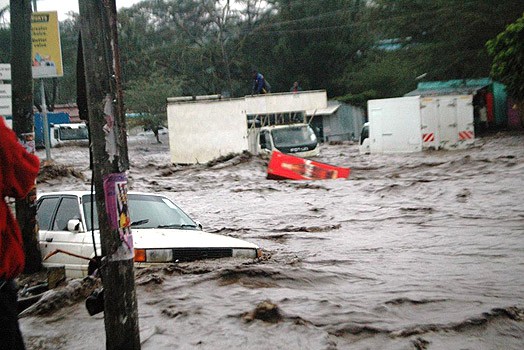When cars get flooded, some people may come through it fine, while others might have no recourse other than to drive away and see if problems develop later.
Here’s how to tell if there’s damage and what you can do about it:
Starting the car might be a delicate option.On one hand, if there’s water in the engine, transmission or fuel system, you’ll just compound the damage.
On the other hand, this might be the only way to establish if its working. However, only attempt to start once you’ve drained out all possible fluids. To be sure, get a mechanic to do this for you.
The mechanical systems and the interior can be dried out or cleaned with a lot of labor, but the electrical systems on modern cars are extremely complex. These systems rely on a lot of low-voltage signals from sensors in the engine management system and ABS. These low-voltage signals are extremely sensitive to corrosion on connectors, and problems can crop up for years.
Look for a high-water mark. That can be easy–if the water was muddy or there was a lot of floating grass and leaves. But clean water may leave no residue. Look for water inside the doors and the taillights, and dampness in the carpets and interior trim. This will allow you to eliminate cleaning some areas or systems on the car unnecessarily. Let’s go through those systems.
The trunk could also be affected since water will lie in low areas, said Reed. For cars older than 10 years, make sure to remove everything inside, including the spare tire and repair kit. Also try to sponge away what water you can.
Check the dipsticks for the engine and transmission. If there are water droplets clinging to the end of either dipstick, you absolutely, positively need to change the oil and filter before even thinking about starting the engine. If the water was muddy, it’s probably wisest to remove the oil pan from the engine and wash the mud out. Change the oil and filter again in a few hundred miles, too.
Muddy water can infiltrate its way past engine seals within a few hours. Crankshaft seals, transmission seals and axle and CV joint seals are adequate to keep lubricants in, but they are not designed to keep standing water from creeping in. Before you start the engine, or tow a car with the wheels on the ground, drain and change the oil, transmission fluid and final-drive lube. Check the dipstick for water droplets. And don’t forget wheel bearings and constant velocity joints, which will need to be cleaned and repacked. Some front-drive cars have sealed-for-life front axle bearings, and you’ll simply have to wait for those to fail, because it’s nearly impossible to clean and relube them.
And then change those fluids again if there was evidence of muddy water.








